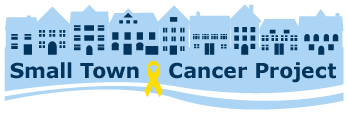Citizens Cleaned Up Industrial Pollution in their Town, then Tried to Understand Cancer Causes
Lessons Learned from the White Lake Area Cancer Mapping Project of 2009-2013
In the early 2000s, White Lake area citizens had noticed a wave of cancers. This followed a period of industrial pollution in the mid- to late-1900s. Public health officials were not seeing an alarming increase in cancers, but the citizens were aware of young people who had moved away prior to their diagnosis, so their cancers would have been counted elsewhere.
From 2009-2013 the townspeople conducted a voluntary, self-reporting survey of people born 1910 or later who had lived in the White Lake area and had been diagnosed with cancer. They included summer residents and people who had moved away. The survey asked for all of the participants’ White Lake area addresses in hopes of creating maps that might help them discover whether there were any links between the environmental hazards and the cancers.
Survey respondents shared information on 1,115 cancers. Citizens had hoped that the data would be analyzed by public health officials, but this was later found not to be possible.
I had been involved in organizing this undertaking, and it became my responsibility to follow through – to see what we could learn from these data. If cancer prevention is the key to reducing our cancer burden, how might our community contribute to the effort to connect the dots between industrial toxic exposures and cancer?
I soon realized the challenges of trying to map 1,115 cancers of 1,051 participants, each having moved to the area at different times of their lives and having lived at up to six White Lake area residences for lengths of time ranging from one to 89 years. How could we reasonably select which addresses would be relevant?
Two situations presented themselves in which I believed I could avoid bias while selecting addresses for mapping: 1) the first address of participants that had lived in the White Lake area as children, and 2) maps representing participants’ address at estimated onset of cancer (rather than address at diagnosis) for certain cancer types.
In addition to these two mapping situations, I have used tables and graphs to try to understand and present the information that was so generously shared by participants. I want to be clear that I am not a scientist and I am not an expert in statistics; therefore, you will not find expert analysis of the data in this report. Nevertheless, I have researched the topic of industrial hazards and cancer over the past decade and I hope to share some ideas and opinions that may be useful. These are summarized in the Introduction and The Hazards/Cancer Puzzle sections of this report.
Claire Schlaff

